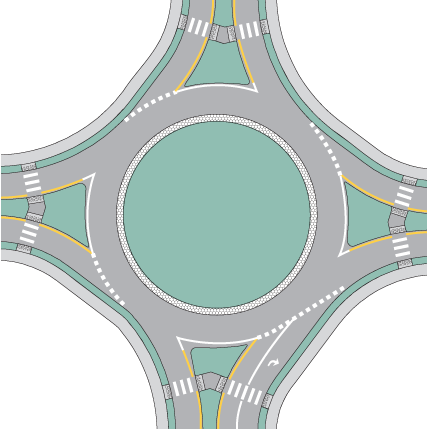Roundabouts

Roundabouts are generally the safest intersection design available. Roundabouts should be considered where traffic volumes fluctuate significantly by approach throughout the day, or where the All-Way STOP or signal control is not appropriate.
Two key characteristics of any roundabout include:
- Entering traffic must yield to circulating traffic.
- Each approach has a splitter island designed to slow traffic and to ensure that all vehicles travel in the proper direction around the central island.
A roundabout is defined as a circular intersection with yield control at entry, which permits a vehicle on the circulatory roadway to proceed, and with deflection of the approaching vehicle counterclockwise around a central island. Further, it is a modified traffic circle that conforms to specific geometric design criteria that promotes driver awareness, reduced traffic speeds, and improved traffic flow. Roundabouts reduce traffic congestion by eliminating left turns. Since each approach to the roundabout is essentially an intersection with a one-way street, the driver is not delayed by traffic flow from two directions. Only right turns are allowed.
Roundabouts eliminate angle and head-on crashes. Roundabouts promote slower speeds due to the diversion in travel path. Crashes that occur at roundabouts are at a much lower speed than at traditional intersections, and are, therefore, less severe.


